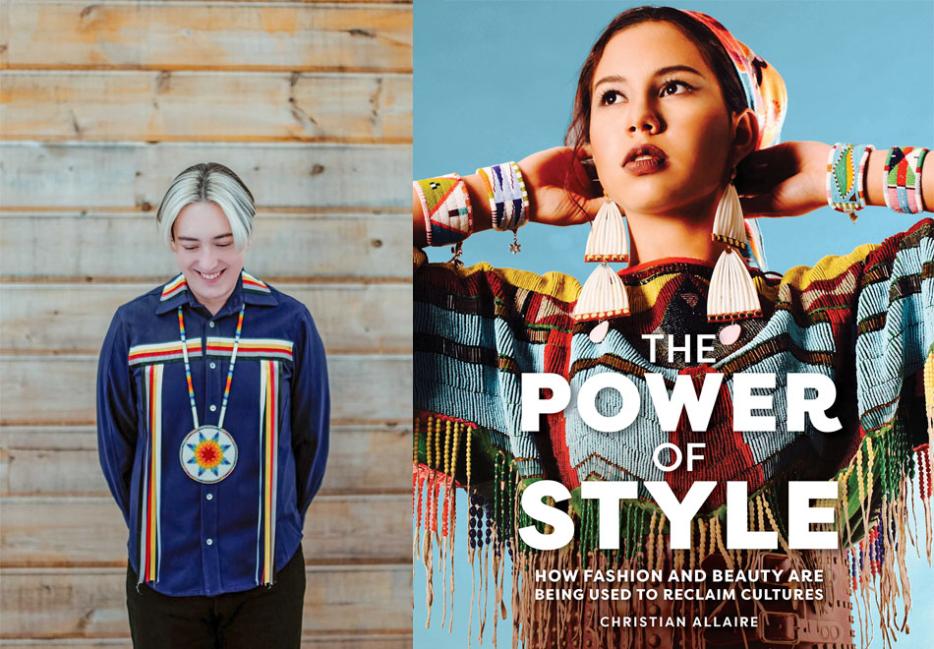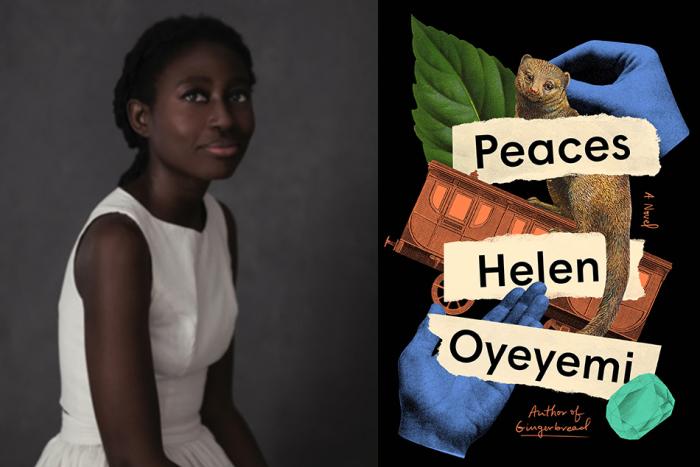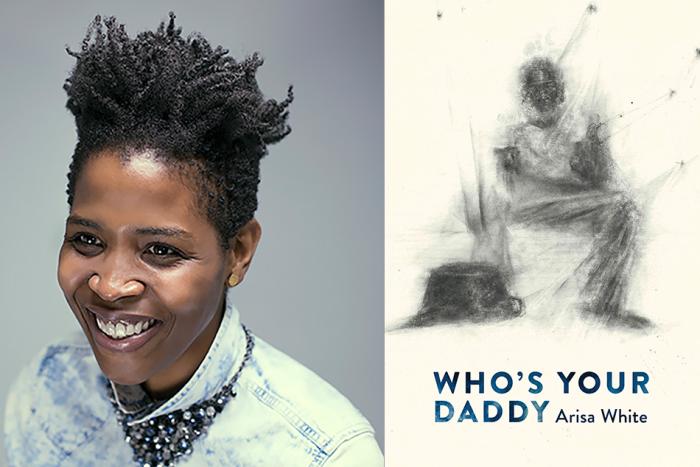In the introduction to his debut book, The Power of Style (Annick Press), Vogue fashion and style writer Christian Allaire asks, “Can fashion or beauty serve a greater purpose than just being visually satisfying?” To me, fashion has always been a liminal space—a gravity-free interzone where lawlessness coincides with infinite possibility. It is a site for dreaming with reckless abandon, a funhouse mirror that reflects one not exactly as they are but how they want to be. Of course, fashion and beauty can serve a greater purpose than being visually satisfying, I thought, but does it necessarily matter?
In his book, Allaire makes a compelling argument that it does, highlighting traditional styles such as Indigenous ribbon work and colourful hijabs that belong to the earthly realm but also inspire the lucid dreams fashion is meant to. The book also illustrates how creativity can form in the margins; though Black hair has been maligned and prohibited throughout history, the example of a man braiding his hair in the shape of the Microsoft Windows logo feels like a symbol of lightness and possibility.
The Power of Style is an impactful book that urges individuals to claim their own power through the medium of fashion, whether anyone else gets it or not. It celebrates stepping into your own power, owning your style, finding yourself, and being unafraid to share it with the world.
Isabel B. Slone: When you first embarked on this project, what did you hope to create? And how different is the finished product from what you had initially intended to write?
Christian Allaire: This book has been three years in the making. Initially, Annick Press reached out and asked me if I would be interested in working on a book with no topic in mind, so I really had to think about it. At first, I wanted to write all about Indigenous fashion, because there hasn’t really been a proper book devoted to covering Indigenous fashion yet. But I began thinking about cultural fashion in general and how different cultures use clothes to express their traditions, and I realized that I wanted to explore a bunch of different cultures, not just my own. That’s kind of how the book shaped up. It was written for teens and young adults, so I thought it was a good way to introduce them to the idea that clothes can be something more than just what you wear—it can be a cultural signifier.
Where did you first encounter this idea that clothes can be more than something you wear?
Growing up, I was always surrounded by traditional Indigenous regalia stuff that is worn to powwows or special ceremonies—pieces that have really great meaning. I’ve always known that clothes can have a deeper purpose than just being pretty but I never really partook in that side of my culture. I didn’t dance in powwows or wear traditional regalia. I actually didn’t even become interested in learning more until way later in life, probably within the last five years. I wish I was encouraged to do it as a kid. That’s kind of why I wanted to write the book, because I didn’t have anything like it encouraging me to embrace that side of my culture.
And now you’re leaning into it! I was obsessed with the ribbon shirt you describe having custom-made by your aunts.
Thank you! Yes, last summer during lockdown, I decided I wanted a traditional Indigenous ribbon shirt made. Ribbon shirts are typically worn at powwows or for special ceremonies; it's meant for special occasions. My grandmother made me one when I was a kid, but, as an adult, I had yet to own a piece of regalia, and felt it was time—especially as I attend so many Indigenous-focused events. My mom and aunts designed it and sewed it for me. Each colour of the ribbons on my shirt represents something (my elders' favorite colours), and, on the back, an embroidered crane represents my clan. I love the smaller details too, like abalone shells used on the buttons.
It occurred to me while reading that you’re really toggling between two themes throughout the book—breaking boundaries and appreciating your culture—and those two different themes are actually one and the same when you consider how exclusionary and oppressive the fashion industry has been historically.
There’s a really exciting movement beginning to take hold where people are taking ownership of their cultures and traditions and flipping and twisting them into something new. A lot of the Indigenous designers I spoke with use ribbon work, similar to the shirt I had made, in their designs. They’re still using the same techniques their grandmother used but are doing them in really cool and modern ways and using them to create pieces you’d see on the runway. I think it’s important for tradition to survive and, in order for that to happen, you have to update it and make it feel new. That’s what a lot of the subjects in the book are doing.
Within the past five or so years, there’s been a huge push to “diversify” the fashion world. But I think that focus tends to have the opposite effect than it intends to because it leads to coverage where the only interesting thing about a person is their race or how they identify, which just feels really scummy and tokenizing. Do you think we’ll ever get to a place in fashion where identity is no longer placed front and centre because it isn’t considered novel anymore?
I think we’ve made a lot of great strides towards diversity and representation in the fashion industry but there’s still a lot of work that needs to be done. What I’ve learned over the past year is that people should not need the influence of mainstream pop culture to feel comfortable with their culture. I get it because a way I’ve felt in the past is, “I don’t see my friends or my favourite stars wearing it, it must not be cool.” It’s easy for kids to be a sponge and want to do what they see other people doing. But what I hope people take from this book is that you should rock your cultural or traditional wear however you want, because it’s unique to you. You should wear it because no one else is wearing it. I think it would be great for mainstream fashion to embrace all cultures but, at the end of the day, it doesn’t matter.
Totally. Representation is a trap because it doesn’t work to actively dismantle the hierarchical social structures like capitalism that have led us to this point. Even if there are an equal number of Black models in a runway show, what issue does that solve? Representation addresses the symptoms of the problem instead of cutting the rot out at its core.
The way fashion has been approaching inclusivity and diversity has been pretty narrow. There are so many more ways that culture could be included in the conversation that isn’t happening. Like, instead of just hiring BIPOC models—which is so important, don't get me wrong—why not also include underrepresented people behind the scenes too? In your design teams, marketing teams? It would be great to see smaller brands be included in the main big fashion calendars too. But, I don’t know, there are a lot of smaller designers doing their own thing and creating really amazing work who don’t even want to be part of the mainstream fashion calendar. They don’t want to be sold at Neiman Marcus. That’s not their dream. I think the industry is changing a lot and how we tackle addressing "representation" needs to change, too. It needs to happen in every facet of the industry—and not just in the performative ways.
Could the answer be for fashion media to embrace and champion these designers who don’t aspire to mainstream success? Or is the answer accepting the fragmentation of the fashion world and just pursuing exclusively what you’re interested in regardless of whether it’s popular or visible or not?
I do think media coverage is something that is needed. Again, up until five years ago, I didn’t even know who any Indigenous designers were. I didn’t know who was making stuff and that’s because no magazine or news outlet was covering them. Even now, with the diversity push, we’re only starting to see the biggest Native American designers get coverage—and they’ve been doing this for 30 years. It’s kind of crazy. Media representation is important and still has a long way to go but we’re finally starting to see it happening. And I think the small, niche designers would appreciate being highlighted.
Of course, you’re right. How else would a wider audience find out about them? Amidst the pandemic, it seems to me that fashion has become this arena where people are more comfortable playing and dressing in ways that feel more true to themselves, whether that’s sweatpants every day or wearing heels to the grocery store. What role do you see fashion playing in our society going forward?
I think because we’ve had nowhere to go and nothing to dress up for, it’s made people think a little more critically about what they wear. For some, it’s purging their wardrobe of things they just don’t wear anymore and, for others, it’s paying more attention to the story or the details behind the things they buy. A lot of my friends want to know more about where their clothes are coming from, how they’re made, and who is making it. There’s been a general increase in awareness of how our clothing is made, for sure. Going forward, I hope that will allow for a new crop of small, homegrown designers who are making really thoughtful pieces to take off. Do you approach fashion in that way?
I agree that the ecosystem of fashion will only continue to grow smaller and more niche. Sure, people looking at pictures of Harry Styles wearing Gucci and other big brands will continue to thrive. But the way things are now reminds me of fashion blogs in the early 2000s—everyone has their own tiny following of people they’re speaking directly to and they don’t need mainstream recognition for what they’re doing. Their audience has naturally gravitated towards them; they’ve found each other and that’s all they need.
Even the buzziest brands right now are small labels: Emily Bode, Christopher John Rogers. Neither of these are huge labels. I think that, across the board, we’re seeing people begin to appreciate the art of smaller labels and not require a designer brand name to assign value to a piece.
Absolutely. How did you decide on which cultural traditions you wanted to include in the book?
I want to be clear that it’s not an all-encompassing book. There’s no way I could have included every culturally significant garment in the world, as much as I would have loved to. It really came down to making sure there was a good variety, with enough different voices and cultures. It’s also an extremely visual book—younger audiences tend to soak in visuals more than they do words—so I veered towards picking traditional items that are really vibrant and beautiful to look at.
The book is written for younger audiences. What do you think adults can take away from it?
What I hope any reader learns is that, if they have a unique cultural background, they’ll feel confident and proud to embrace it and explore it through fashion. And even if you’re white, you can learn about other people’s stories and learn how to embrace fashion in a different, more holistic way. I mean, I didn’t know anything about the cosplay world when I started writing this book—that was totally new to me. I just hope to be able to offer a quick glimpse into other people’s lives, basically.






